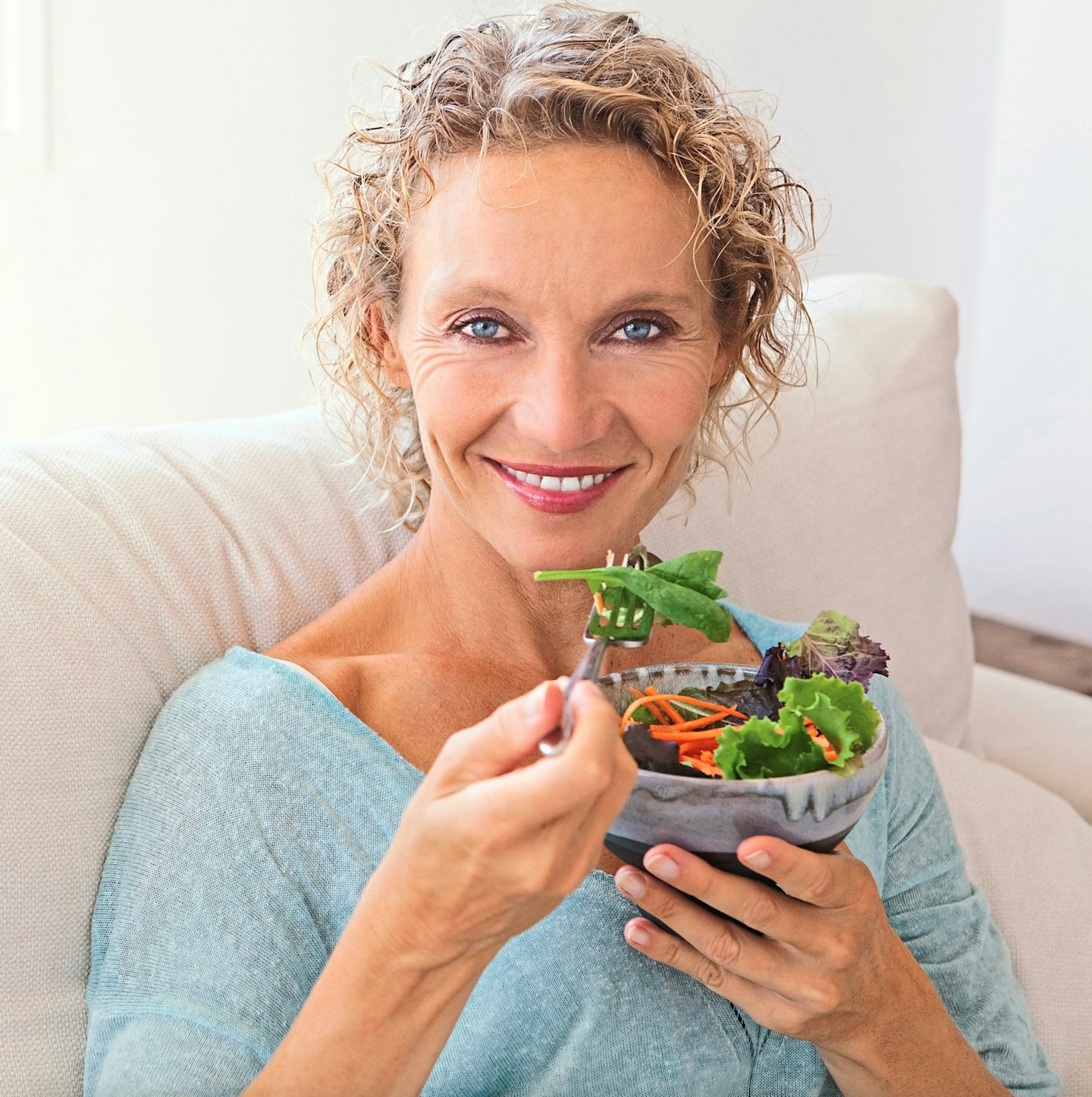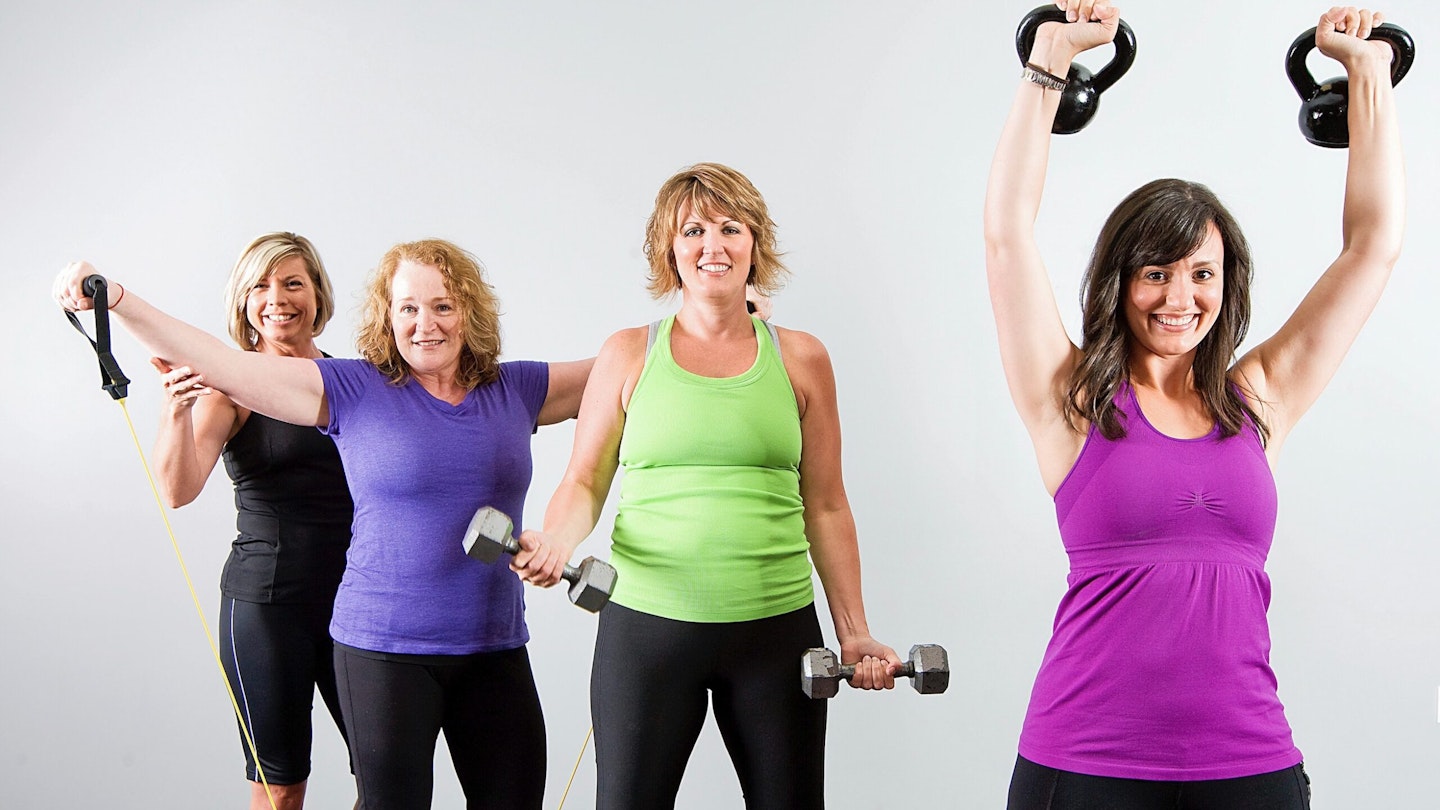Having strong bones helps prevent painful breaks that can cause long-lasting health problems. Here’s how to give them a boost
COMMIT TO CALCIUM (even if you don’t do dairy)
Calcium is vital to stave off bone loss, so what are the best ways to get it?
‘It’s found in a variety of foods including milk, cheese, yogurt, leafy greens, broccoli, beans, lentils, tofu, plus tinned sardines and salmon with bones,’ says Claire Barnes, nutritionist at Bio-Kult (bio-kult.com). ‘However, the bioavailability of calcium — the amount actually absorbed by the body — varies by food type. ‘Dairy foods have a bioavailability of about 30 per cent. So, if a nutrition label states 300mg of calcium per cup of milk, your body actually absorbs around 100mg. Plant foods like leafy green vegetables contain less calcium overall, but have a higher bioavailability than dairy.
‘For example, bok choy contains about 160mg of calcium per cup cooked, but has a bioavailability of 50 per cent, so around 80mg is absorbed. Therefore, eating a cup of cooked bok choy has almost as much bioavailable calcium asdrinking a cup of milk.’
DON’T BE ‘D’ DEFICIENT
Vitamin D helps your body to absorb bone-boosting calcium, and sun exposure is the most important natural source. But from October to March in the UK, the sun’s rays aren’t strong enough for us to make vitamin D, so taking a vitamin D3 supplement is recommended. ‘Only a few foods naturally contain vitamin D,’ says Claire. ‘These include oily fish, especially salmon, freerange egg yolks and mushrooms grown under UV lights. Aim to get these foods into your daily diet.’
GO WITH YOUR GUT
Having a healthy gut microbiome, containing a range of bacteria and microbes, is thought to help your body absorb key bone minerals vitamins D and K. To boost your gut health, try eating probiotic yogurt, or a multistrain live bacteria supplement like Bio-Kult, suggests Claire.

JUMP TO IT!
Any weight-bearing exercise that puts stress on your bones — such as tennis and brisk
walking — pushes your boneforming cells to build more mass. One study from Oregon State University found that postmenopausal women who incorporated jumping into their fitness regimens slowed bone loss in the hip, or even increased bone density there.
The women, who were all monitored for sufficient knee, ankle and hip strength before taking part, did 50 jumps a day, three days a week.
Try it: Jump comfortably in the air — no more than four or five inches — and land flat-footed to distribute the force.
STOP SMOKING
Studies have shown links between smoking and reduced bone density. It’s thought that smoking not only reduces blood supply to your bones and stops your body from absorbing calcium well, but the nicotine in cigarettes also slows production of bone-producing cells called osteoblasts. It’s tough to give up without help. Figures show your chance of quitting for good is boosted if you sign up to a free, local NHS stop-smoking service.
AVOID OVER-DIETING
Women with a low BMI are at a greater risk of developing osteoporosis, and under-eating when you’re already slim, is a real no-no for your skeleton’s strength. ‘Research shows that calorie restriction decreases bone mineral density, and studies suggest that the risk of weightloss induced bone loss is greater in lean people than in heavier individuals,’ says Claire. ‘Common signs that indicateyou’re under-eating include fatigue, hair loss, getting ill more often, menstrual or reproductive difficulties and constantly feeling cold.’
CAN THE SUGARY DRINKS DRINKS
Researchers at US Tufts University found that women who regularly drank cola had lower bone mineral density in their hips. It’s suggested this may be because drinking cola daily doesn’t leave enough room in the diet for other drinks that can help build stronger bones, such as milk or fortified orange juice. Or it could be that the caffeine in cola interferes with calcium absorption. Whatever the case, too many sugary colas are bad for your body, so aim to cut them out completely, or restrict
them to weekends.
BUILD THOSE BONES!
Just as strength training builds muscles, it can also help slow bone loss, or even build more bone. Target your hips, wrists and spine — areas most likely to fracture in a fall — with strength-training exercises using weights or resistance bands at home or on weight machines at the gym.
